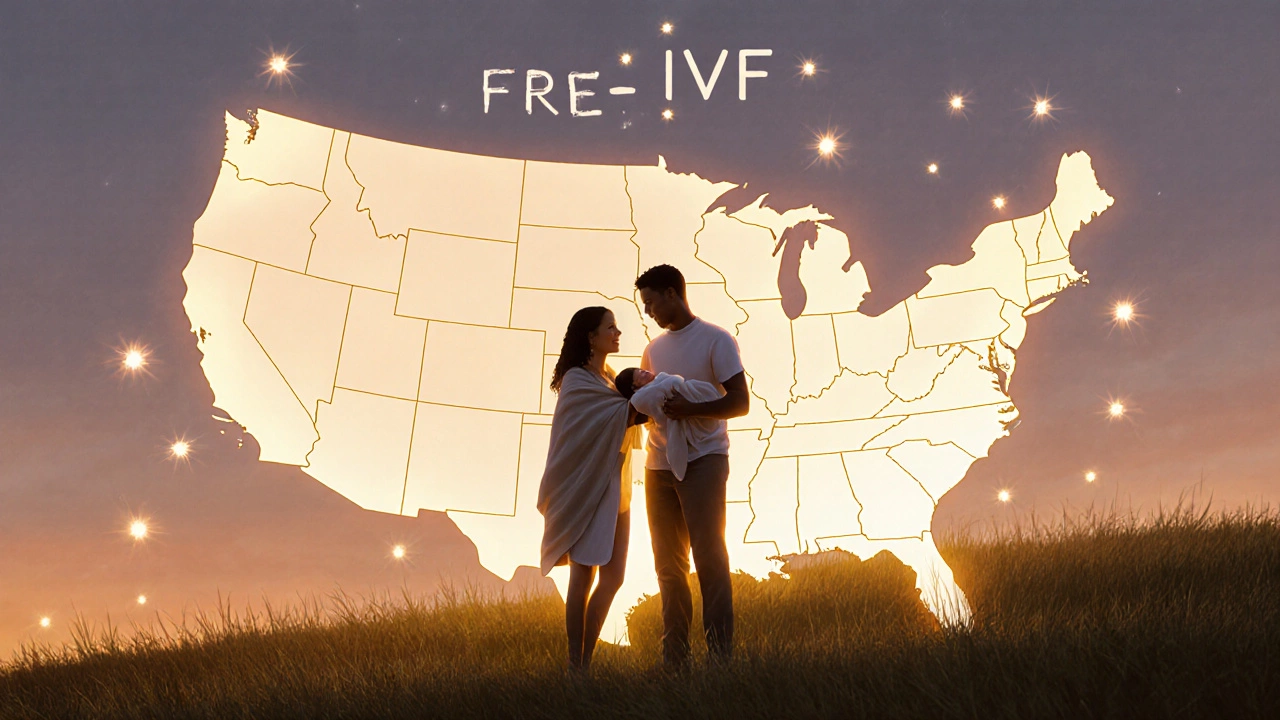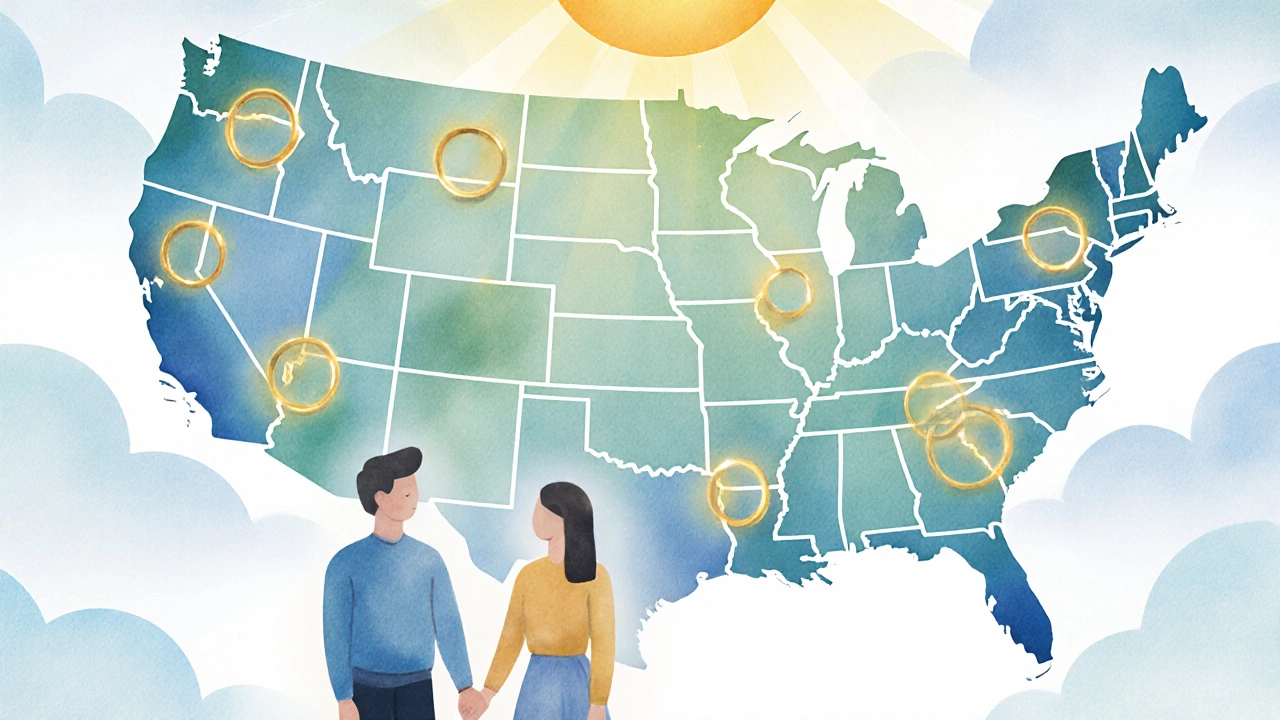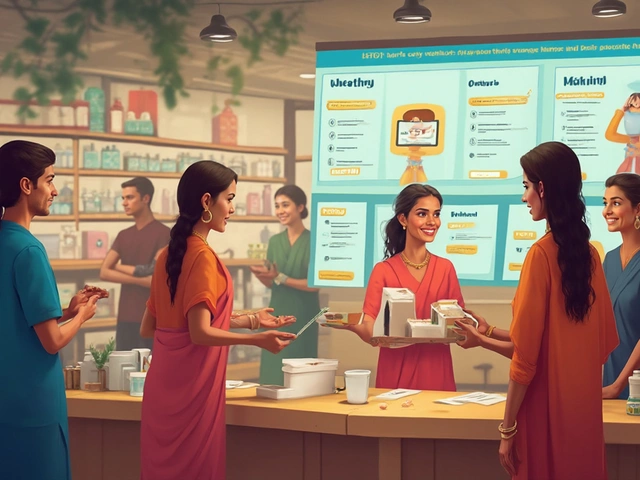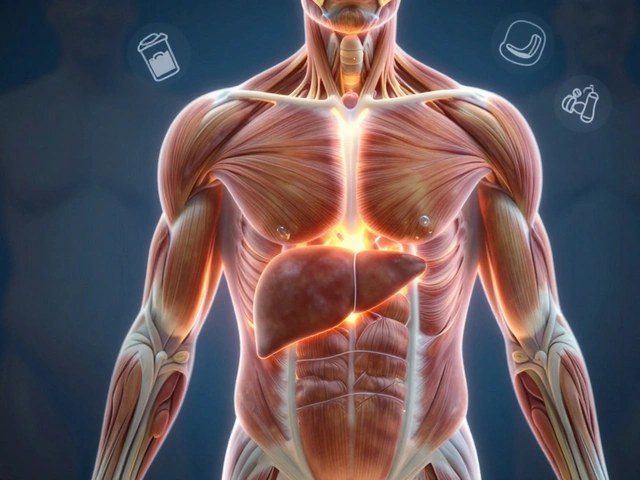Free IVF Coverage Eligibility Checker
Check Your Eligibility
Determine if you qualify for free IVF programs in your state based on income, age, and medical requirements.
How This Works
This tool compares your inputs against the 2025 eligibility criteria for free IVF programs in the states listed. Results are based on data from the article above.
- Uses income limits as percentage of Federal Poverty Level (FPL)
- Checks against state-specific age and diagnosis requirements
- Notes which programs may fund multiple cycles
Couples battling infertility often wonder where the money will come from. In 2025, several states have stepped in with programs that actually pay for the whole in‑vitro fertilization (IVF) cycle, removing a huge financial hurdle.
When it comes to reproductive assistance, Free IVF is a program that covers the full cost of IVF for eligible patients, typically using state Medicaid dollars or dedicated grant funds. These initiatives aim to boost birth rates and address disparities in access to fertility care.
Understanding the landscape starts with two core ideas: what qualifies as free IVF and which state policies actually fund it. Not every Medicaid plan includes IVF, and not every state has a blanket program. Eligibility often hinges on income limits, age caps, specific medical diagnoses, or residency requirements.
What "Free IVF" Really Means
IVF is a set of laboratory techniques that combine an egg and sperm outside the body, then transfer the resulting embryo back into the uterus. The process can involve multiple cycles, medication, monitoring, and embryology services, easily topping $15,000 per attempt.
Free IVF programs differ from standard insurance coverage. Instead of a partial reimbursement, they pay the entire bill-from medication to embryo transfer-directly to the clinic. Some states label the benefit as a "grant," others as a "state‑funded IVF program." The common thread is that qualified couples face no out‑of‑pocket cost.
Key Eligibility Factors Across States
- Income threshold: Most programs cap household income at 250% of the federal poverty level, though a few use stricter limits.
- Medical diagnosis: Infertility must be documented, often requiring a diagnosis of tubal factor, severe male factor, or unexplained infertility.
- Age limits: Women are typically required to be under 40, with some states extending to 42 if other risk factors are present.
- Residency: Applicants must prove at least six months of continuous residence in the state before applying.
- Prior attempts: Certain programs allow only the first IVF cycle to be covered, while others may fund a second if the first fails.
Because each state writes its own rules, the same couple could be eligible in one place but not another.
State‑by‑State Breakdown (2025)
| State | Program Name | Funding Source | Eligibility Highlights | Application Deadline |
|---|---|---|---|---|
| California | California Infertility Insurance Program (CIIP) | State Medicaid + Private Grants | Income ≤ 250% FPL, female ≤ 40, documented infertility | Rolling - decisions within 30 days |
| Colorado | Colorado IVF Grant | State Legislature Allocation | Income ≤ 200% FPL, first IVF cycle only, residency 6months | March1 (annual) |
| Connecticut | Connecticut Fertility Assistance (CFA) | Medicaid Waiver | Income ≤ 225% FPL, female ≤ 38, male factor diagnosis accepted | July15 (rolling) |
| Illinois | Illinois IVF Coverage Act | State Medicaid Expansion | Income ≤ 300% FPL, up to two cycles, age ≤ 41 | All year - quarterly reviews |
| Massachusetts | Massachusetts IVF Fund | State Health Budget | Income ≤ 250% FPL, first cycle covered, resident ≥ 12months | January31 (annual) |
| New York | NY IVF Assistance | NY State Medicaid + Private Partnerships | Income ≤ 275% FPL, female ≤ 40, any infertility cause | Rolling - all year |
| Oregon | Oregon IVF Grant | State Legislature | Income ≤ 200% FPL, first cycle only, residency 6months | April30 (annual) |
| Washington | Washington Fertility Support | State Health Funding | Income ≤ 250% FPL, up to two cycles, female ≤ 42 | Rolling - limited slots per quarter |
The table captures the core data for each program, but details can shift with new legislation. Always verify the most current guidelines on the state health department website before applying.

How to Apply for a Free IVF Program
- Confirm your eligibility by reviewing the state’s income and medical criteria.
- Gather documentation: recent tax returns, proof of residency, infertility diagnosis, and any prior IVF records.
- Complete the official application portal-most states use an online form linked to their Medicaid or health services site.
- Submit the application along with required documents. Some states request a signed physician statement.
- Follow up with the state’s assistance office. Processing times range from 15days to 6weeks.
- Once approved, choose a participating fertility clinic. The clinic will bill the state directly, so you never pay out of pocket.
Tip: Keep copies of every submission and note the case number. If you’re denied, you can appeal within 30days, often with the help of a patient advocate.
Maximizing Your Chances of Success
- Choose a high‑volume clinic. Clinics that perform more than 300 cycles a year tend to have higher live‑birth rates.
- Ask about pre‑implantation genetic testing (PGT). Some state programs cover PGT, which can improve outcomes for couples with known genetic concerns.
- Stay on a healthy diet and manage stress. Studies from the CDC show a modest increase in success when patients follow a Mediterranean‑style diet during treatment.
- Consider a second‑cycle boost. If your state funds two cycles, plan the timeline so the second attempt starts within three months of the first failure.

Common Pitfalls and How to Avoid Them
Even with free IVF, couples can hit snags that delay or cancel treatment.
- Missing the income cutoff. Income is often calculated based on the most recent tax year. If you’re close to the limit, you might need to provide a supplemental hardship statement.
- Incomplete medical paperwork. A missing hormone level report can trigger a denial. Double‑check the checklist before hitting submit.
- Choosing a non‑participating clinic. Only clinics with a contract with the state can receive direct payment. Verify the clinic’s status early.
- Overlooking deadlines. Annual application windows are easy to miss. Set calendar reminders a month before the cut‑off.
Resources for Further Help
Below are a few trusted sources to keep handy during your journey.
- CDC Infertility Data and Statistics - national trends and success rates.
- Resolve: The National Infertility Association - advocacy, support groups, and policy updates.
- State health department websites (e.g., California Department of Health Care Services) - the most accurate program details.
- Patient navigator services offered by many fertility clinics - they can guide you through paperwork and appeals.
Frequently Asked Questions
Which states currently fund 100% of IVF costs?
As of 2025, eight states-California, Colorado, Connecticut, Illinois, Massachusetts, New York, Oregon, and Washington-run programs that cover the full cost of at least one IVF cycle for eligible couples.
Can Medicaid recipients qualify for free IVF?
Yes, many of the state programs are built on Medicaid waivers or expansions, allowing Medicaid enrollees who meet income and medical criteria to receive fully covered IVF.
What if I move to another state during treatment?
Eligibility usually requires continued residency. If you relocate, you’ll need to re‑apply in the new state and may have to pause treatment until approval.
Do these programs cover medication costs?
All of the listed state programs include prescribed ovarian stimulation drugs in the coverage. Some may have preferred pharmacy networks.
How many IVF cycles can I receive under a free IVF program?
It varies. Colorado, Oregon, and Connecticut limit you to the first cycle only, whereas Illinois and Washington allow up to two cycles if the first attempt fails.










